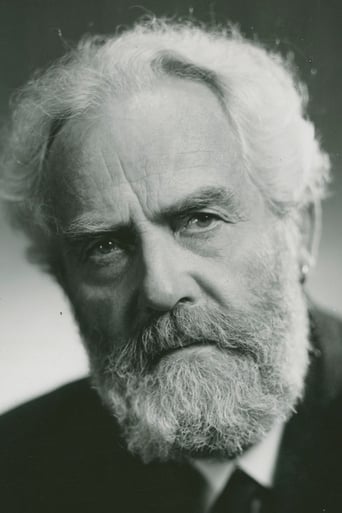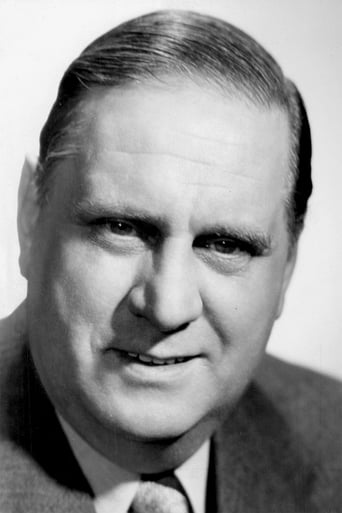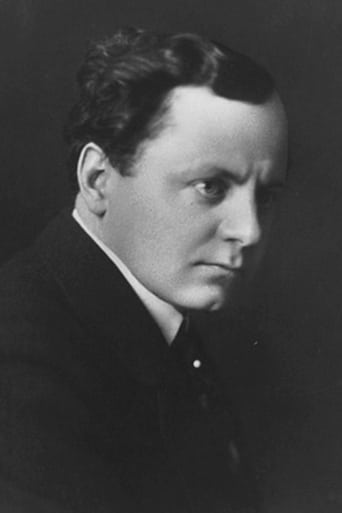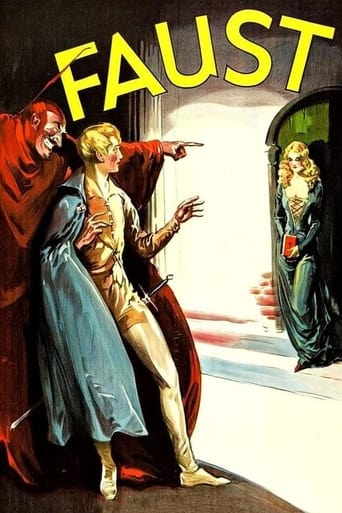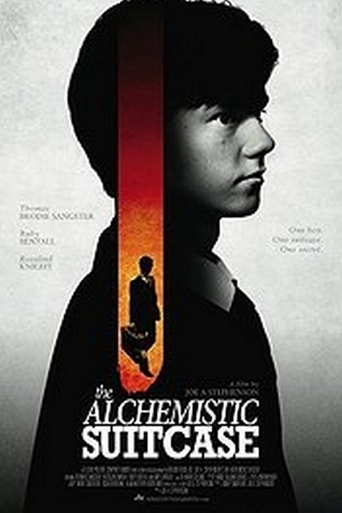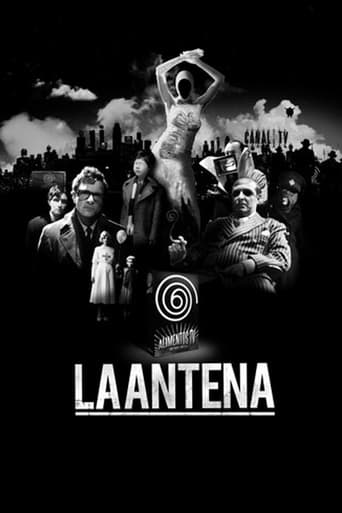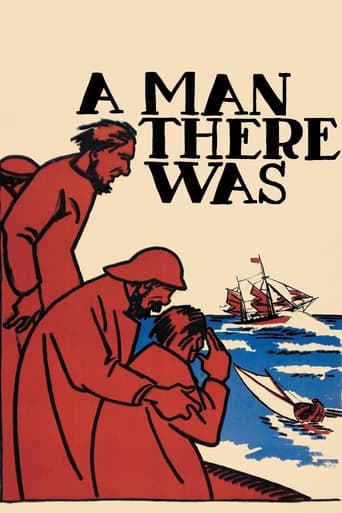
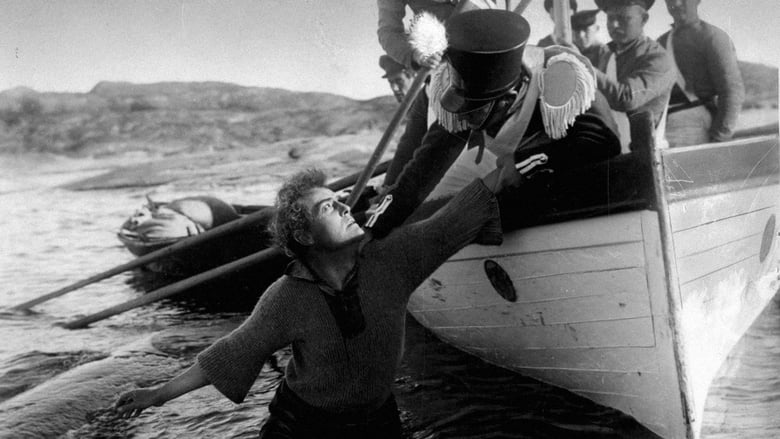
A Man There Was (1917)
Terje Vigen, a sailor, suffers the loss of his family through the inflexibility of another man. Years later, when his enemy's family finds itself dependent on his benevolence, Terje must decide whether to avenge himself.
Watch Trailer
Cast
Similar titles


Reviews
I'll tell you why so serious
It's hard to see any effort in the film. There's no comedy to speak of, no real drama and, worst of all.
I cannot think of one single thing that I would change about this film. The acting is incomparable, the directing deft, and the writing poignantly brilliant.
The film never slows down or bores, plunging from one harrowing sequence to the next.
A Man There Was tells the story of Terge Vigen, a Swedish seaman played by director Victor Sjöström who plucks up the courage to take on the British Empire's naval blockade of trade routes which in turn is slowly starving out his small village, wife and child. Set mostly amid the chaotic northern sea and coastlines, Sjöström creates a wonderfully moody and sombre atmosphere throughout filled with strife and tension, an impressive and fitting soundtrack (on the 2008 DVD version), distilled by beautiful intertitles taken from a Henrik Ibsen poem. Although it has its moments and overall is an enjoyable feature, its short runtime, sometimes plodding pacing and lack of significant plotting stop the movie from ever truly taking off beyond being a mere mood piece.
This film was terrible, terrible! As I said in my title, Adolf Hitler loved this film because it put the British in a very bad light. Among other things, Hitler was not known for his good taste! Yes, this film has other problems. First of all, its depressing! A guy (Virgen) gets food for his family, but is captured by the British and held prisoner for five years. When Virgen, on bended knee, tearfully explains what his skiff was doing in the water, the British laugh in his face. When he's finally released from prison, he comes home to see that his wife and child have starved to death. A bit later in the film, he goes out to rescue a yacht in trouble and sees that it's none other than the commander of the ship who imprisoned him five years earlier, along with his wife and baby. Herein lies another problem. It gets kind of fuzzy about whether or not Virgen ultimately rescues these people. You see someone else do that while Virgen is raging at them. Then there's the ending, which I will go ahead and tell you because I don't want you to waste your time on this turkey. Now, in the scene before the end, Terje is waving at these British people. I could have ended there (and gotten a "2" or "3" from me). But nooooooooooooooo! He dies and it shows his grave! Gee whiz! Again, I say, do yourself a favor and DO NOT watch this!
"Terje Vigen" is one of the best films of the 1910s. It's extraordinarily well crafted for 1917, with some brisk, modern editing (e.g. the capture scene) and, especially, outstanding photography throughout. In this respect, the only slight criticism I could give the film is that it's rather short, at about 53 minutes on the Kino DVD; regardless, the pacing is good. The intertitles from Ibsen, despite whatever is lost in translation, I think also add to the film's rhythm and mood.Most of the drama takes place outside, at sea, which avoids some of the dimensional and framing awkwardness, or theatricality, of shooting indoors that so afflicted early filmmakers. Much of it also occurs at night, and the reconstructed blue tinting is very good. Moreover, director Victor Sjöström and cinematographer Julius Jaenzon's photography is not only naturalistic; they make nature into the defining presence of the picture. They do so quite economically, too. Reportedly, the location was less than ideal--settling for the closer and calmer shoreline of Stockholm rather than the real Norwegian island and including in the story a man-o'-war and village, both of which they show very little of. Yet, they didn't need them.Sjöström seems to have been one of the first to make nature a central character in his films in a significant way and returned to the conflict between man and nature in such films as "The Outlaw and His Wife" (1918) and "The Wind" (1928). In "Terje Vigen", it's not only the warship or its commander that challenges and affords him, or provides the plot, but also the stormy waters, the foliage that disguises him and his boat as part of the natural environment, the isolation of the island, the entrapment of the sea. Nature as a catalyst and reflection of the plot and character development become most evident in the film's climax.To top it off, Sjöström plays the lead, Terje Vigen, in a restrained and convincing performance, especially in his transformation from robust youth to embittered and isolated old man. There's no wonder upon seeing these early performances in his own films that later he would so easily fall back upon acting after his directorial career ended. By 1917, however, Yevgeni Bauer and D.W. Griffith were the only two directors to my knowledge to display such mastery, although for very different uses, of the art form.
Victor Sjöström is perhaps best known as a director for the two silent features he made in America with Lillian Gish, The Scarlet Letter (1926) and The Wind (1928); as an actor, he is surely best remembered for his deeply moving performance as the aging professor in Ingmar Bergman's Wild Strawberries, made in 1957 when he was 78 years old. But the recent recovery of a strikingly well-preserved, tinted print of one of Sjöström's early works produced in his native Sweden should give his reputation a fresh boost and firmly re-establish his place as one of the great directors of the cinema's first generation, alongside D.W. Griffith, Maurice Tourneur, and Erich Von Stroheim. 'Terje Vigen,' based on a poem by Henrik Ibsen, is a remarkably sophisticated film of great beauty, a tragic tale with an ending that is unexpectedly uplifting. I can't recall any other movie I've seen that tells such a sad story and nonetheless left me feeling so exhilarated at the finale.This project marked a personal and professional milestone for the director. A former stage actor, Sjöström made his movie debut as a performer in 1912 at a studio called Svenska Biografteatern and began directing films for the company soon afterward, but in later years he asserted that most of his early efforts were vulgar and conventional. By the summer of 1916 he was at a low-point, unhappy about his career and the recent failure of his marriage. When producer Charles Magnusson suggested he adapt Ibsen's epic poem "Terje Vigen" Sjöström was skeptical of its potential as screen material, that is, until a bicycle trip to the Grimstad coast, where the poem is set, changed his mind. For financial reasons the filming took place on the sea shore near Stockholm rather than Grimstad, but the director took full advantage of his location's rocky coast and crashing waves, making the landscape an integral part of his film. When the lead actor originally slated to play Terje Vigen dropped out Sjöström took the role himself, and thus put his personal stamp on the finished product. He gave a measured yet intense performance in the title role and appeared in practically every scene.The story is set in the early 19th century and may remind some viewers of the tale of Enoch Arden (which had supplied the plot of one of D.W. Griffith's strongest Biograph dramas in 1911). Terje Vigen is a fisherman who quits the seafaring life to marry and start a family in Grimstad, a coastal village. But the Napoleonic wars sweep Europe, and when the British navy sets up a blockade of his island the threat of starvation becomes a grim reality. Rather than see his wife and daughter starve, Terje attempts to run the blockade and return with food. He almost succeeds, but the British spot him in his small boat, give chase, and eventually catch him. Dragged onto the deck of the British frigate he begs for mercy, but the Captain coldly ignores his pleas and has him imprisoned. Five years later Terje is released and returns to his village to find strangers living in his home: his wife and daughter died of starvation. Years pass, and Terje dreams only of vengeance. When a yacht founders off the coast he rescues the owner with his wife and child, and recognizes him as the British captain who denied him mercy years earlier. Terje has it within his power to kill all three, but the sight of the child restores his humanity. He spares them, and his desire for vengeance is conquered.The first thing you notice about this film is that the seaside landscapes are thrilling. The cinematography is excellent throughout, but 'Terje Vigen' is more than just a series of beautiful images. Sjöström's Terje is a strong and dignified protagonist. In a role that could easily have lent itself to eye-rolling histrionics the director did not permit himself to overact, and he set the tone for the other performers: there isn't a single false moment from anyone. Sjöström's directorial technique is especially impressive during the emotional high point, Terje's frantic attempt to escape the British sailors in his boat. It's startling to find a sequence like this one in such an early feature: the director puts the viewer squarely in the midst of the action by alternately placing his camera in each of the boats. He cuts back and forth between shots of Terje's arms furiously rowing and shots of the uniformed British sailors coolly coordinating their pursuit. The camera rocks with the ocean, the tempo of the editing accelerates, and the suspense builds sharply. It's an amazing sequence, especially coming after the stately, melancholy introductory scenes on shore. The sea chase also features the only moment of humor, when Terje briefly believes that he's eluded his pursuers, and "cocks a snook" at them (i.e. puts his thumb to his nose and waggles his fingers). But his triumph is short-lived.The story is a tragedy, but Terje's climactic change of heart is what makes this film a surprisingly uplifting experience. After reading a synopsis of the plot I confess I sat down to watch the film expecting it to be gloomy and depressing, but instead found an exciting, expertly-handled work of silent cinema that left me buzzing. Apparently 'Terje Vigen' marked Victor Sjöström's first international success, popular not only in Sweden and throughout Europe but also in the U.S., Latin America and Asia; fully ninety years after it was produced I can understand why.
